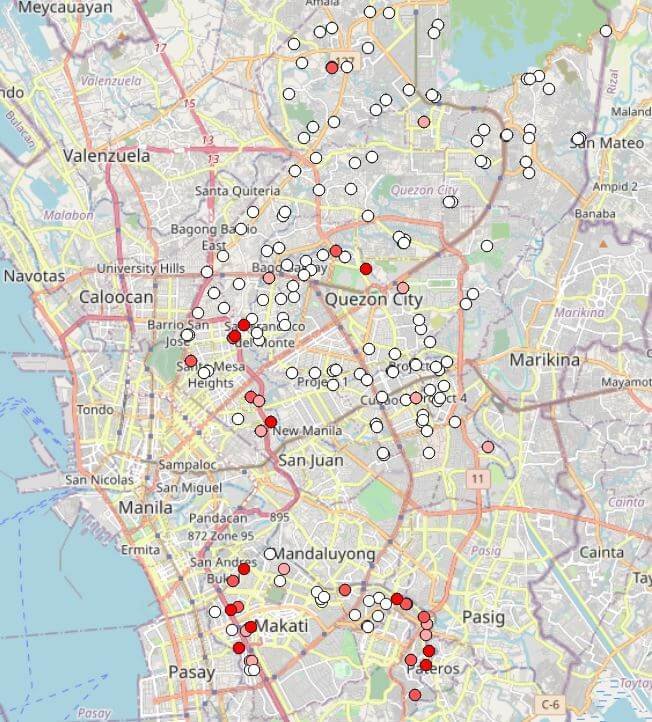Earthquake and flood risk assessment for public school portfolios in Metro Manila
Manila is a major metropolis exposed to many natural hazards. With climate change induced severe flood and major urban earthquake being likely events within the planning horizon of most buildings in the area, preparing for these potential disasters is a key priority for the local department of education. While earthquake hazards are much more devastating in terms of damage, the larger frequency of floods can lead to an overall larger contribution to the total risk exposure of the school portfolios. Hence, protecting the safety of students and minimizing the impact to the school portfolio’s ability to continue to serve the students in the aftermath of both earthquakes and flood are both important performance metrics for guiding decisions.
Kinetica Risk worked with the Earthquake and Megacity Initiative (EMI), Quezon City and Makati City department of education at first to develop high-resolution earthquake scenario risk assessment of more than 1000 schools in the Metro Manila area. To understand risk, large proportions of the school portfolios were surveyed to develop a comprehensive taxonomy of school building archetypes that accurately represent the as built condition of the schools. By combining high-fidelity archetype specific earthquake risk analysis and regional stochastic event simulation, high resolution portfolio seismic risk results that are able to pin-point key cost-drivers and quantify cost-benefits at the global portfolio level were generated for decision-support.
In a similar manner, Kinetica Risk performed a flood risk study on the same portfolio by combining high resolution flood vulnerability with event-based flood simulations to assess flood-related impacts to the portfolio loss and functional disruption. These simulations were also perturbed to account for potential impacts to water levels caused by different RCP (representative concentration pathways) scenarios, which influence the characteristic storm events. The combined multi-hazard analysis offers a more holistic view of the natural hazard exposure over the life-span of the assets and provides a platform for prioritizing risk reduction decision-making.





